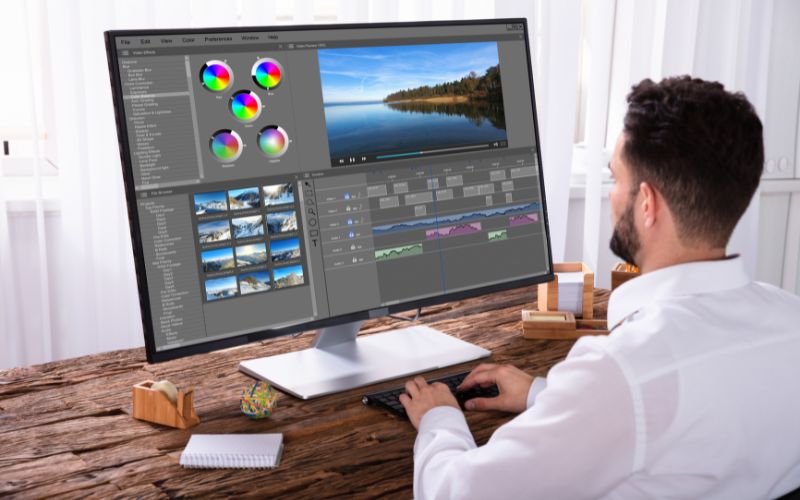Short-form videos. Love them or hate them, they’re everywhere. From 7-second TikTok trends to Instagram Reels that tell a whole story before you can blink, bite-sized video content is defining how we engage, sell, and scroll in 2025.
For marketers, that means one thing: adapt or get left behind.
Whether you’re a small business owner, a content creator, or just a fresher, you’ve probably asked yourself, “How do I keep up with this ever-changing video wave?” That’s exactly what we’ll break down in this post – no fluff, just the trends that matter and what you can actually do with them.
Let’s get into it.
What Is Short-Form Video (and Why Is It Dominating)?
Short-form videos typically last under 60 seconds, though in today’s climate, even a 30-second clip can feel long. They’re fast, visual, emotional, and, when done right, sticky.
Why are they winning?
Because attention is the new currency.
In an age of endless content, people don’t want to “watch” content. They want to feel something instantly. Short videos satisfy that urge, quick, compelling, and scroll-friendly. Whether it’s humour, shock, education, or inspiration, these snippets get in and get out before the viewer’s thumb can move on.
Trend #1: Value-First, Always
2023 and 2024 were the years of “Watch me dance, then I’ll sell you something.” That’s over.
In 2025, short-form video success = value in the first 3 seconds. Think education, not interruption. Problem-solving, not product-pushing.
Ask yourself: what’s the “aha” moment of this video? If it’s not clear within seconds, it’s probably not going to stick.
This is especially relevant if you’re crafting a video marketing strategy. Don’t just promote, serve. Quick tutorials, data-driven stats, or hacks? That’s gold.
Trend #2: Native Editing Is Everything
Forget overproduced studio setups. The best-performing videos are being shot on phones and edited within the platform.
Instagram Reels. TikTok. YouTube Shorts. These platforms all reward content that looks like it belongs there. That means using their fonts, filters, and audio features.
Yes, there’s still room for polished content. But native creation feels more human and more trustworthy. Brands are embracing a lo-fi, on-the-go look. And it’s working.
Trend #3: Faces (Still) Win
One thing hasn’t changed: faces sell.
People connect with people. Not logos. Not animations. Not stock footage.
Even if you’re camera-shy, having a human (or at least a voice) in your videos boosts engagement dramatically. The more your content feels like a conversation, the better it performs.
In fact, storytelling from a real face is now outperforming traditional ads on platforms like YouTube and Facebook. Short-form videos with expressive narrators or behind-the-scenes stories create trust, fast.
Trend #4: Repurpose Like a Pro
Not every video needs to be made from scratch. And thank goodness for that.
The best marketers develop something once and then share it everywhere. Make a TikTok video that explains anything in 45 seconds? Perfect! Break it up into three sections for Instagram. Get prices for a LinkedIn carousel. Get the audio for a podcast clip.
This method not only saves time, but it also makes sure that your brand voice is the same on all platforms. It’s not lazy; it’s scalable.
Trend #5: Search-Optimised Shorts
Short-form video isn’t just entertainment anymore. It’s a search engine.
People use YouTube Shorts, TikTok, and even Instagram like Google. People put things like “how to set up Google Ads” or “easy DIY bookshelf” into search engines and get quick responses in short videos.
What does this mean?
Get your mind going with keywords. Titles. Captions. Hashtags. Add closed captions and put your main keyword in the first sentence. If you’re promoting your Google Ads course, create a Reel or Short titled “3 Common Google Ads Mistakes Beginners Make”.
Make it searchable. Make it rank. Make it short.
Trend #6: Live Meets Short
Short-form isn’t only about pre-recorded clips anymore.
Live-to-Short workflows are trending. That means hosting live Q&As, webinars, or product demos, and then chopping them into snackable, high-impact clips. It gives content more shelf life and reaches audiences who may never tune into a 45-minute session.
This approach also works brilliantly with behind-the-scenes footage. Think event prep, team shoutouts, or raw, unedited thoughts. Authenticity sells, and short snippets of real life boost trust fast.
Trend #7: Micro-Niche Personalisation
Forget going viral for “everyone.” In 2025, the best-performing short videos are hyper-personal.
Think: “If you’re a left-handed graphic designer with ADHD, this one’s for you.”
Niche content speaks louder, even if it reaches fewer people. Because those people care more. And they’ll share, comment, and convert.
Don’t try to be universal. Try to be specific.
Trend #8: AI Tools Make It Easier (But Not Better by Default)
There are dozens of AI tools out there that auto-clip, subtitle, reformat, and schedule your videos. Use them. Absolutely. But don’t depend on them entirely.
AI is not a substitute for true creativity; it is a tool that helps. It can help you do more, faster, but only if your core idea is strong.
So don’t skip the planning. Storyboard. Script. Test. Rethink. Then let the AI handle the trimming and formatting.
Where Should You Post?
Quick rundown:
- TikTok is still the best place for material that is focused on culture and trends. Great for giving a brand a personality.
- Instagram Reels are great for conveying stories and making things seem good. Product-first brands perform well here.
- YouTube Shorts: Best for searchable, educational content.
- LinkedIn Shorts (yes, it’s a thing now): Works great for B2B insight sharing and quick leadership advice.
And yes, you can use the same content in different places. Just tweak it to match the tone and audience.
Master Mobile Game Design with Moople Academy
Dreaming of making a game that people can’t stop playing — one that benefits your career? At Moople Academy, we help you turn that dream into something real. Whether you’re starting out or switching lanes, our Mobile Game Design program gives you the skills, confidence, and creative edge to break into one of the world’s most exciting industries.
We don’t just show you how games are made. We dive deep into what makes them tick — and what makes them sell. From gameplay flow to in-app monetisation, we cover every layer of building mobile games that feel good to play and are built for today’s market.
Here’s why we are the top digital marketing institute in Kolkata and why students choose us for game design:
- We Teach What Studios Want: Our curriculum strikes the right balance between creativity and what studios need in the real world. You’ll learn about game mechanics, level design, mobile UI/UX, in-app purchase strategies, and how players think. It’s not just talk. That’s precisely what the major studios are looking for.
- Learning by Practice: You can’t just sit and listen to this. You’ll start from scratch on ideas, try out prototypes, and make playable games better. Every task you do gets you ready for what actual teams do. You’re not simply learning how to use the tools; you’re utilising them like an expert.
- Important Tools and Tech: We show you the tools that run the industry, from Unity to C#. You won’t only know how to use them; you’ll also know how to make games that are fun, fair, and engaging.
- Mentors Who Have Been There: Not only do our academics lecture, but they also work in some of the best studios. That includes advice from experts in the subject, feedback on your portfolio, and even chances to meet people who might help you acquire internships and employment.
We at Moople Academy don’t simply give away certificates. We make things that people desire. People who create stuff. People who use their brains. People who make things with a purpose in mind.
So if you’re ready to stop dreaming and start building the next big thing on the App Store, we’re ready to help you get there.
Conclusion
Short videos aren’t just a trend anymore, they’re the way people interact online. The basic guidelines remain the same, though: be honest, communicate quickly, and provide value. Whether you’re a solo creator, part of a brand, or fresh out of a marketing course, there’s never been a better time to lean in.
FAQs
Are short videos better than lengthy ones?
Everything depends on what you want to accomplish. Short movies are a great way to catch people’s attention and make them aware. Long-form writing develops trust and authority. A good plan utilises both.
How many times should I post short-form videos per week?
Volume isn’t as important as consistency. If you can, try to do 3–5 a week. Find out what days and hours your audience is most active.
How do I learn short-form video marketing from scratch?
Consider joining a course. Look for a digital marketing institute in Kolkata that covers content strategy, editing, and analytics. Combine learning with real practice.

